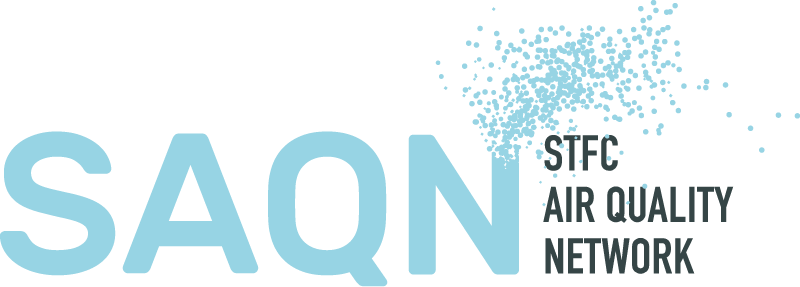On the 14th and 15th of June 2023, members of the STFC Air Quality Network gathered at the Harwell Science and Innovation Campus in Oxfordshire for a Toxicology Tour, showcasing the applications of some of the STFC facilities to this field. Toxicology was identified early on as an area of need in air quality research in which STFC could play a significant role, and this tour arose from a SAQN collaboration event centered on this area of research.

The first stop was the Central Laser Facility (CLF), which houses a wide range of specialised laser equipment. The tour covered many of the various capabilities of CLF, including the OCTOPUS (Optics Clustered to OutPut Unique Solutions) imaging cluster, and demonstrated how the techniques available, from super-resolution microscopy to ‘optical tweezers’ (the use of laser light to capture microscopic particles) could be put to use in the field of toxicology.

Next stop was The Diamond Light Source, the UK’s national synchrotron facility, capable of producing beams of light 10 billion times brighter than the sun. Here guests were able to walk inside the synchatron, view an experimental laboratory and discuss the range of imaging techniques available with staff. Following this, guests proceeded to the picturesque STFC-owned Cosener’s House hotel, in the nearby village of Abingdon, for a delicious networking dinner and (thanks to the glorious weather) post-dinner walks in the hotel gardens.

Bright and early the next morning, guests returned to Harwell for a visit to RAL Space, the UK’s national laboratory advancing the understanding of space. Here they were able to hear talks from staff covering the technical innovations developed by the facility, including High Energy X-ray Imaging Technology (HEXITEC), with applications to cancer diagnosis and treatment, and breath analysers for the detection of sepsis.
Here they were able to hear talks from staff covering the technical innovations developed by the facility, including High Energy X-ray Imaging Technology (HEXITEC), with applications to cancer diagnosis and treatment, and breath analysers for the detection of sepsis.

The final stop on the tour was the ISIS Neutron and Muon Source, where beams of neutrons and muons generated by the facility are used to study materials at the atomic level.
Guests visited Target Station 2 and heard how non-destructive techniques offered by the facility such as QUENS (Quasi Elastic Neutron Scattering) can be used to investigate drug and gene delivery systems, or determine the effect of cell exposure to specific toxins. The tour then concluded with a lunch hosted at ISIS.
Huge thanks must go to all the STFC staff who so kindly gave their time and enthusiasm to demonstrate the potential of the facilities to our guests. Participant feedback from the tour was extremely positive, with members praising both the opportunities to make connections across a range of different disciplines, and the benefits of seeing the facilities first-hand, enabling them to engage facilities staff in discussions and discover the specific contributions that could be made to their personal research. We confidently hope that many fruitful collaborations ensue!

